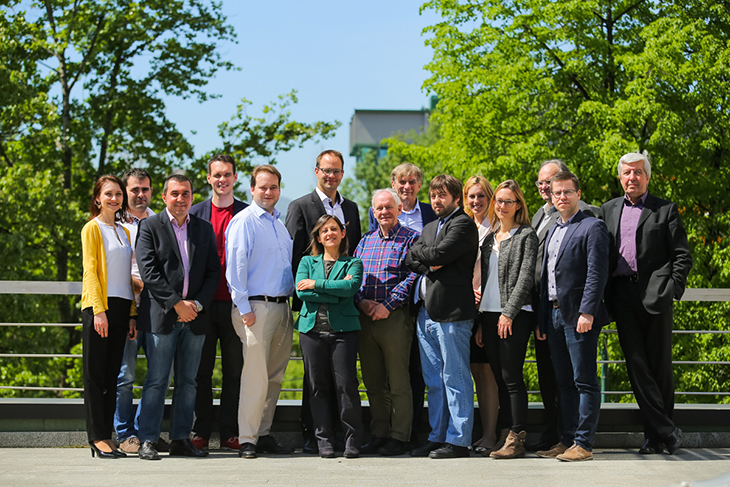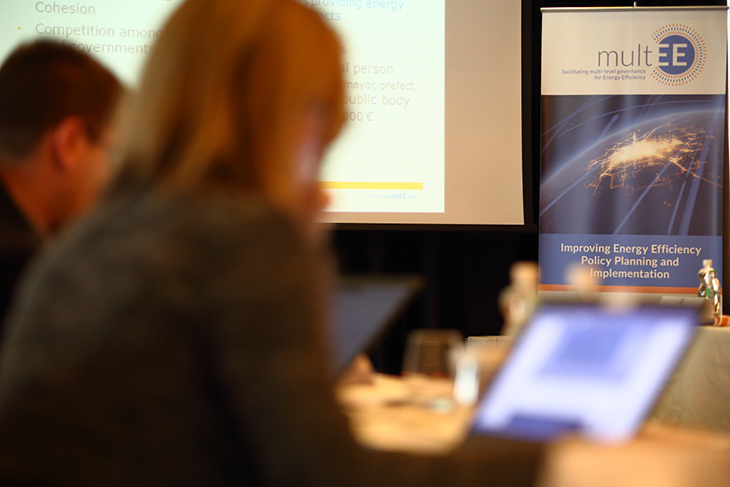
By Benjamin Struss, GIZ ORF-EE Project Coordinator, e-mail: benjamin.struss@giz.de
Setting up effective and efficient Monitoring and Verification Schemes (M&V) for energy efficiency policies and improving coordination between the different governmental actors for enhancement of policy formulation and implementation, are key aims of the international research project multEE – Facilitating multi-level governance for Energy Efficiency.
The project is led by the German cooperation Deutsche Gesellschaft für Internationale Zusammenarbeit (GIZ) in a consortium composed of Ecologic Institute (Germany), the Austrian Energy Agency (AEA), the Centre for Renewable Energy Sources and Saving (CRES), the Institute of Physical Energetic (IPE), the Energy Institute Hrvoje Pozar (EIHP), the Lithuanian Energy Institute (LEI), the Macedonian Center for Energy Efficiency (MACEF), the Slovakian Innovation and Energy Agency (SIEA) and the University of Roskilde (RUC). It is funded by the European Commission’s Horizon 2020 Programme and the German Federal Ministry for Economic Cooperation and Development.

Photo 1: multEE project team
Coordinated by the Centre for Renewable Energy Sources and Savings (CRES) from Greece, the project had conducted a mapping exercise of good practices on existing monitoring & verification schemes and coordination mechanisms in the EU 28 + Macedonia (FYR). The mapping results have been published in a synthesis report on good practices from EU 28 + Macedonia (FYR). Key recommendations from this analysis are now available in the form of two policy briefs. These aim at policy makers at different governmental levels who are engaged in the development of effective and coherent energy efficiency policies.
Policy Brief Monitoring & Verification Schemes
Setting up a monitoring and verification scheme has been one of the key tasks as regards transposition of the EU Services Directive (2006/32/EU) into national law, which is binding for all countries of the Western Balkans who are signatories of the Energy Community Treaty. Its repealing Energy Efficiency Directive (2012/27/EU) contains a similar provision. It is binding for all EU member states and should also be transposed into national law by Energy Community member states until 2017.
As the mapping exercise, as conducted by the multEE consortium shows, the present situation on monitoring and verification in the countries covered, is very complex and diverse. Results indicate use of a variety of tools ranging from application of very sophisticated IT systems to excel spreadsheets, and from reliance on top-down to an extensive use of bottom-up indicators. However, despite the differences in size, administrative organisation and political culture of states at stake, there are six policy recommendations of general nature which can contribute to the development of more robust and efficient M&V schemes. These are as follows:
- Keep political responsibility for energy efficiency policy design and M&V in the same hands;
- Involve subordinate bodies or other specialised institutions in the administration of the scheme;
- Clearly define the responsibilities between the responsible line ministry, possible supporting institutions and data providers;
- Develop and use bottom-up methodologies for monitoring wherever economically feasible;
- Centralised databases with clearly defined collection procedures ensure availability and accessibility of data for reporting and evaluation purposes;
- The most effective verification and reporting procedures should be integrated into the M&V scheme.

Photo 2: multEE Advisory Board meeting Sarajevo, April 2016
The referent analysis on the coordination mechanisms focused on the institutional setting and processes for formulation and implementation of energy efficiency policies. Legal responsibility for policy design, in most countries, lies on the national governmental level, while implementation, to a great extent, happens on local or regional levels. The results of the mapping, however, show that these lower governmental levels, to very different degrees, are involved in policy design. Also, most countries follow a different approach.
Policy Brief Coordination Mechanisms
Five recommendations for policy makers have been derived from the analysis in this regard:
- Systematically involve the implementation level (typically local and regional) in the policy formulation process and make use of their specific expertise and knowledge;
- Complement formal policy coordination with informal coordination fora or networks;
- Involve stakeholders from academia, business or civil society into policy formulation and implementation;
- Complement legal obligations with carefully designed financial support schemes and;
- Introduce a review mechanism for the different policies adopted and include different stakeholders in the evaluation.
Policy briefs documents:
Policy Briefs No. 1 – Policy recommendations on Monitoring & Verification schemes in EU
Policy Briefs No. 2 – Policy recommendations on coordination mechanism
Multilingual project flyer and briefing: http://multee.eu/project-flyer-and-briefing
multEE Reports: http://multee.eu/result-type/report
Contacts: http://multee.eu/contact

















